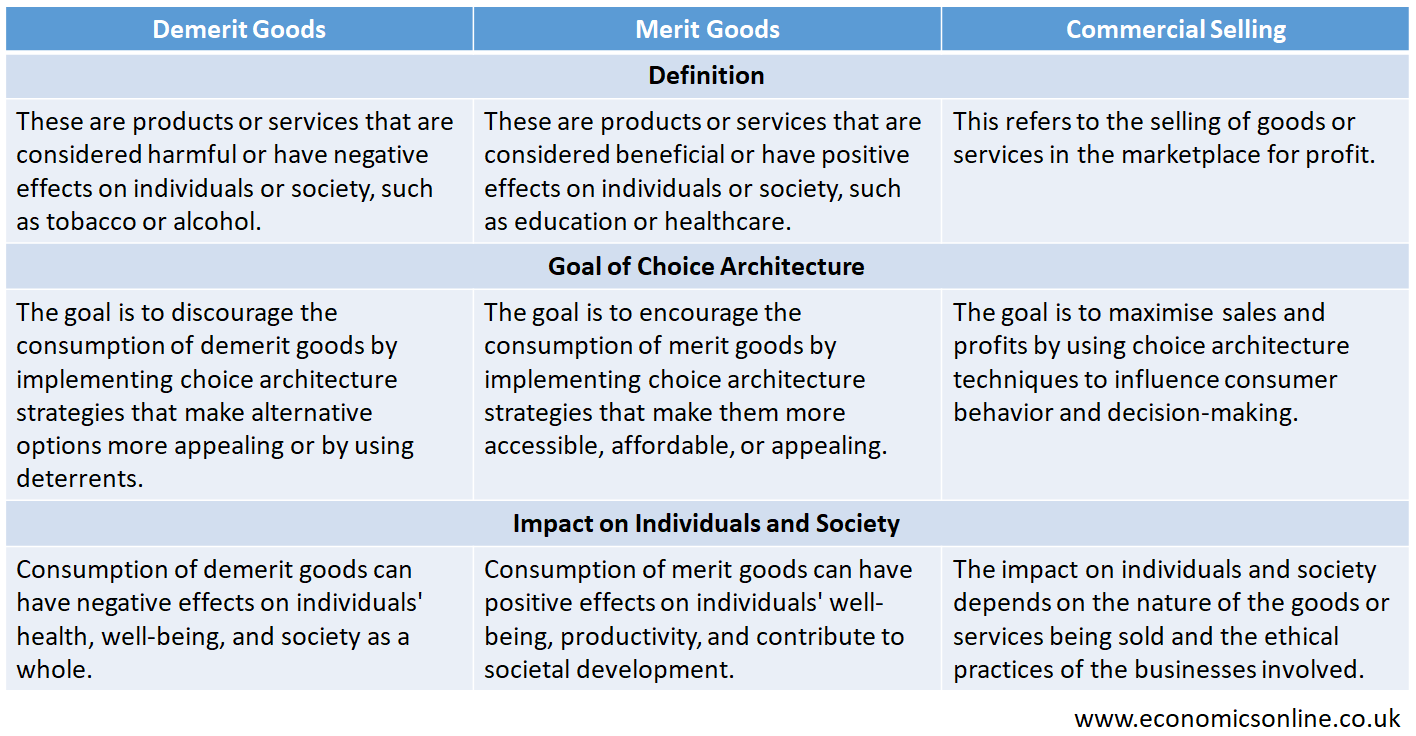
An image of a salad bar.
Choice Architecture
Definition
A way in which choices are presented to individuals, leading to influencing their decision-making processes, is called choice architecture. Choice architecture consists of arrangements and designs of options to guide people towards choices.
In simple words, choice architecture refers to the presentation of objects or options in different ways. This presentation of objects or options in front of people can influence their decisions. The effect of choice architecture is a change in people’s behavior.
Choice architecture is a core concept used in nudge theory to encourage non-forced compliance and desired behaviour.
Choice Architect
A person who designs the way choices are presented and displayed to people with the purpose of influencing their decisions is called a choice architect.
For example, a choice architect designs a restaurant’s layout, displaying healthier items on the most visible side and non-healthier items on the less prominent side, making the healthier items the choice of the people visiting the restaurant.
Historical Background of the Choice Architecture
The term choice architecture was coined by Richard Thaler and Cass Sunstein in their 2008 book “Nudge: Improving Decisions About Health, Wealth, and Happiness”. Richard Thaler is a Nobel Prize winning behavioral economist. The above mentioned book was declared the best book of the year 2008 by ‘The Economist'.
Choice architecture has its roots in psychology and economics to understand how people make decisions.
Choice architecture has been used in many fields, such as public policy and design, to influence desired behavior and shape decision-making processes.
Using the Choice Architecture
People, as decision makers, don’t always make better choices, and they don’t always act rationally. Sometimes, people make choices that are against their own self-interest, for example, smoking cigarettes, drinking alcohol and overspeeding.
Using the choice architecture can influence the decisions made by people to their benefit by encouraging them to select the better options. This will be beneficial for the people as well as society.
Choices have to be presented in some way, so why not present them to reinforce desired behaviours that are beneficial for the people.
Nudge Theory
Nudge theory refers to the use of positive reinforcements or indirect suggestions (nudges) in order to achieve non-forced compliance and to encourage desired behaviour. This theory is part of behavioral economics. The objective of using the nudge theory is to encourage non-forced compliance and to encourage desired behavior change without using laws.
The use of nudge theory will not restrain freedom of choice. Freedom of choice is restrained if laws are used.
Nudges
The subtle prompts or interventions designed to influence individuals’ behaviour and decision-making without restricting their freedom of choice are called nudges. Nudges aim to promote specific actions or choices by making them more convenient and appealing.
According to the Oxford dictionary, nudge means a small push from the elbow.

In economics, a nudge means positive reinforcement or an indirect suggestion that is used to achieve non-forced compliance and to encourage desired behaviour.
According to Richard Thaler, nudge refers to any small feature in the environment that attracts our attention and that influences the behaviour we exhibit. It is any aspect of choice architecture which can influence decisions and behaviours in predictable ways.
Who should Use the Choice Architecture?
Everyone can use it but mostly it is used by government, policy-makers and public sector organisations to encourage behaviours and decisions that are beneficial for people.
Why to use the Choice Architecture?
Choice architecture and nudge theory are used so that people can make better choices through non-forced compliance without using laws.
Examples of the Choice Architecture
Healthy Eating
Placing a salad bar at the start of a cafeteria deliberately to promote healthy eating is a good example of using the choice architecture. The person who decides where to put the salad bar is a choice architect. The arrangement of food influences people's choices in terms of what they eat. If the salad bar is placed at the start and burgers later, people have to pass by the salad bar in order to go to the burger section. That increases the chances of eating salad, which is a good thing and our objective too.
Road Safety
Marking the roads with yellow or white lines to promote driving at low speed is another example of the choice architecture. When drivers approach the dangerous part of the road, yellow lines get closer. It gives the driver the illusion of speeding up. So drivers will slow down their speed, which is good for them and our desired behaviour too.
Examples of Digital Nudges
Examples of digital nudges are:
Social Proof
Displaying social proof, such as a number of likes, shares, and positive reviews on a product or service, can influence other individuals to take the same actions, such as reviewing a clothing website. If there is a positive response, people are more likely to buy clothes from the website, as past users did.
Default Options
By setting some option as the default choice, it is easier for users to select the given option rather than looking for alternatives. Calibri font is a default option in a Word document.
Reminders and Notifications
By sending reminders and notifications to the users to complete certain tasks and to take desired actions. All social media platforms provide this kind of service by sending personalised reminders and notifications to notify users of what’s going on.
The Ethics of Nudges and Choice Architecture
The following points explain the ethical dimension of using the choice architecture as part of nudge theory:
Respect for Autonomy
Nudges should respect individuals’ freedom of choice and not manipulate them into making choices or decisions against their will.
Transparency and Consent
Nudges should be transparent when communicating with the users, making them understand and allowing them to choose what they desire. Consent is critical to understanding that individuals are aware of and comfortable with the influence imposed by nudges.
Beneficial Interventions
Nudges should be designed with the intention of promoting positive behaviours and outcomes, like health, safety, or environmental sustainability, instead of only serving the interests of nudges.
How to Use Nudges in Choice Architecture
The following tips are to incorporate nudges into the designs of choice architecture:
Understand the Context
First, you have to identify the specific behaviour or decision you want to influence and understand the user’s motivations, needs, and challenges in that context.
Make it Salient
Second, highlight the desired actions or choices by making them more salient, visually appealing, or easily accessible. Use visual cues, contrasting color schemes, or a clear call-to-action to draw attention.
Provide Guidance
Third, offer clear and concise instructions and guidance to help users navigate through the decision-making process. Use simple language for better understanding, step-by-step prompts, and tips to guide them towards the desired outcome.
Libertarian Paternalism
An approach that suggests it is possible to nudge people towards making better choices while still preserving their freedom to choose, is known as libertarian paternalism. It promotes designing the choice architecture in a way that encourages beneficial decision-making without forcing it.
Example
Implementing automatic enrollment in retirement plans with an option to adopt allows individuals to save for their future without forcing them to do so. This nudges them towards making a positive decision while maintaining their freedom to choose.
Reinforcement
A process that strengthens or increases the likelihood of a behaviour being repeated is known as reinforcement. It involves providing consequences, either negative or positive, to encourage or discourage certain behaviours.
Example
Training a dog and giving a treat to a dog when it perfectly performs a trick is positive reinforcement. This will increase the repetition of the same behaviour by the dog in the future to receive a reward.
Tools of Choice Architecture
The following are some major tools of choice architecture:
Framing
Presenting options in a way that emphasises certain aspects influences how people perceive and evaluate them.
Incentives
This means offering economic incentives, rewards or punishments to encourage or discourage specific behaviours.
Nudges
This involves using subtle cues or prompts to guide decision-making without restricting choices.
Information Display
This means providing clear and relevant information to help individuals make informed decisions.
Simplification
This means streamlining complex choices by reducing the number of options (reducing the choice overload) or simplifying the decision-making process.
Social Norms
Highlighting what is considered normal or socially desirable behaviour influences choices.
Feedback
This means providing individuals with feedback on their choices and outcomes to encourage reflection and improvement.
Choice Architecture in Business
The following points explain how to use choice architecture in business:
Product Placement
Arrange products strategically to influence customer choices. For example, placing high-margin items at eye level or near the checkout counter can increase sales.
Default Options
This means setting default choices that are aligned with the desired outcomes. For instance, setting the default option for a subscription to auto-renew can increase customer retention.
Information Presentation
Present information in a clear and compelling way to guide customer decisions. Highlighting key features or benefits can influence purchasing behaviour.
Demerit Goods, Merit Goods, and Commercial Selling in the Context of Choice Architecture
The following table summarises the main points regarding merit goods, demerit goods, and commercial selling in the context of the choice architecture.

Evaluation of Choice Architecture
The following points explain the evaluation of choice architecture:
Effectiveness
It means assessing whether the chosen interventions and strategies actually lead to the desired behavioural outcomes.
Ethical Considerations
It means evaluating the ethical implications of nudging individuals towards specific choices and ensuring that it respects autonomy and freedom of choice.
Transparency
It means ensuring that the design and implementation of choice architecture are transparent and clearly communicated to individuals, so they are aware of the influences on their decision-making.
Unintended Consequences
It means evaluating any unintended impacts or consequences that may arise from the use of choice architecture, such as unintended biases or negative effects on certain groups.
Long-term Sustainability
Assessing the long-term effectiveness and sustainability of choice architecture interventions, considering the potential for habituation or resistance to nudges over time.
Conclusion
In conclusion, choice architecture refers to the design of the choice environment to influence an individual’s decision-making processes. Choice architecture is used to shape behavior, encourage or discourage choices, and encourage societal well-being. By understanding techniques and strategies of choice architecture, businesses and individuals can create environments that nudge people towards making more informed, healthier, or socially responsible choices. Choice architecture is a tool that can be used to improve decision-making and also contribute to positive outcomes for individuals and society as a whole.


